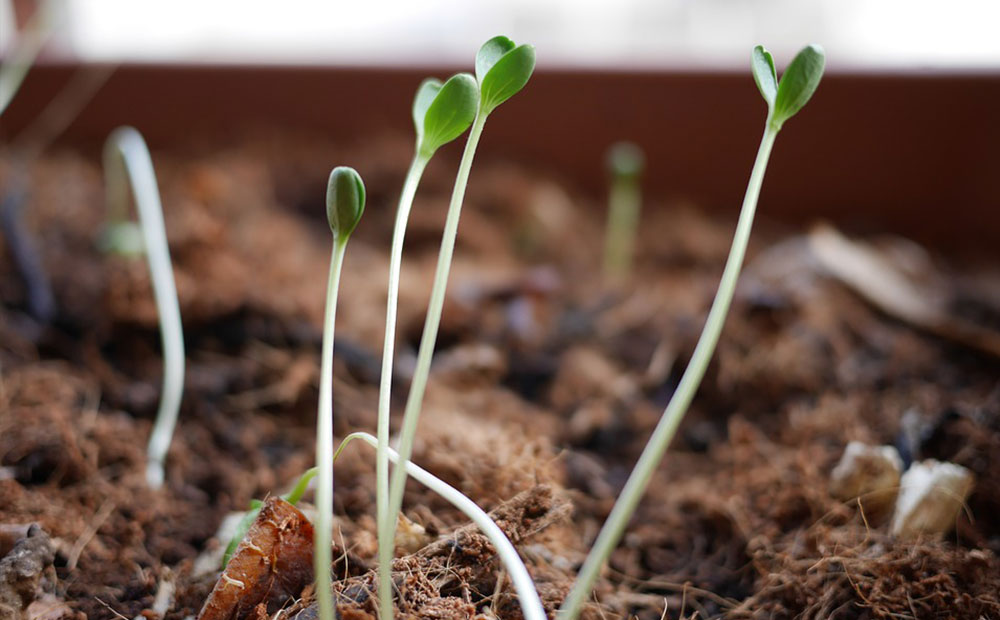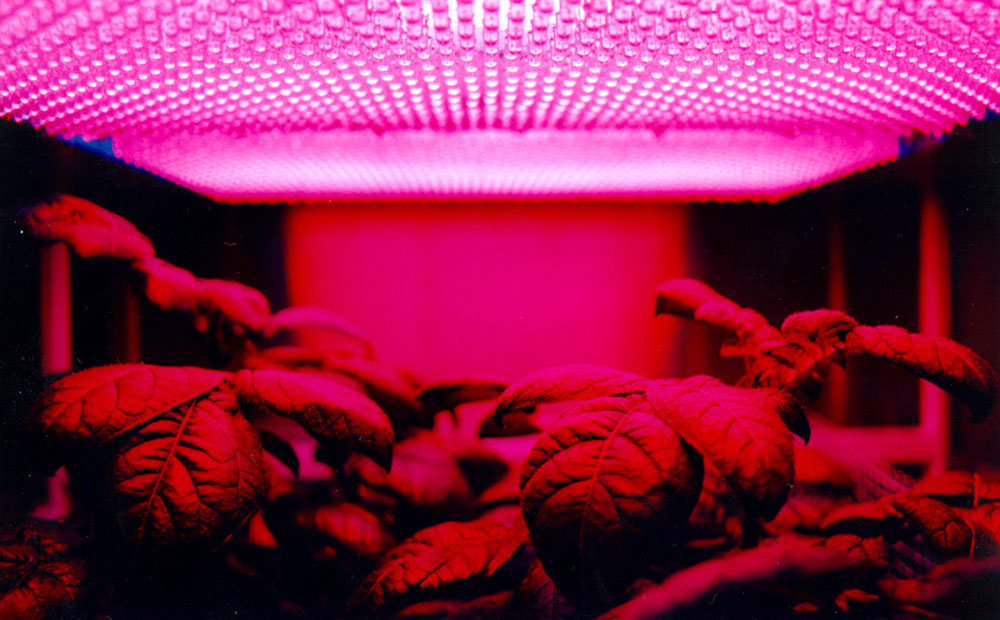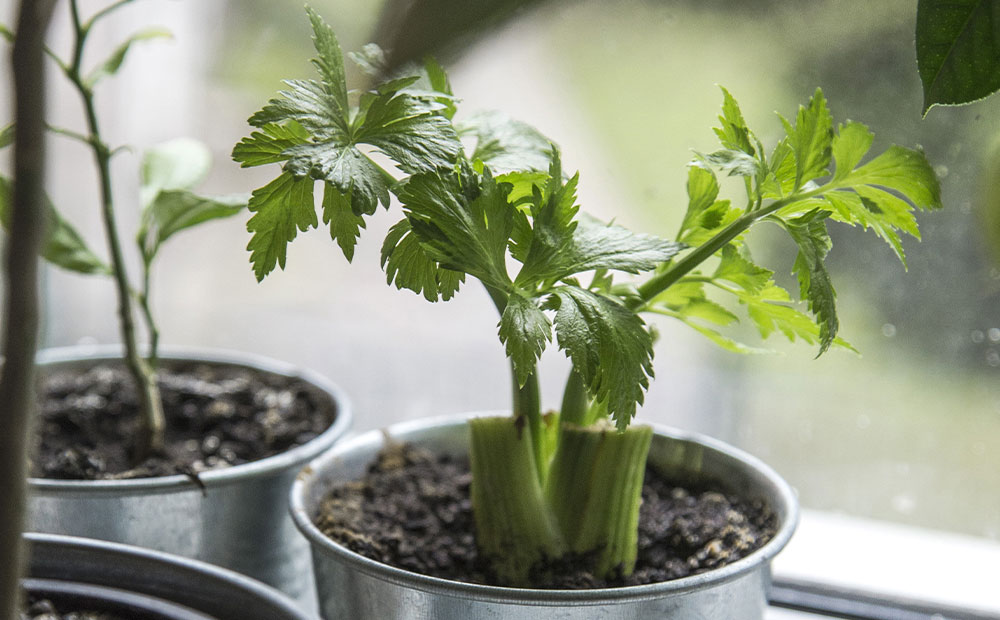
01
Plan Your Seed Starting
02
Get Busy Seeding
03
Water & Light
03
Easy Does It: Transitioning to Outdoors
Here in the Midwest, outdoor conditions aren’t always ideal for plants to thrive – particularly during those first few months of seeding and sprouting in late winter and early spring. All it takes is an unexpected frost or heavy winds for your garden to suffer and then it’s Game Over. Luckily, with the help of a few tools from our garden center, you can eliminate the risks of growing outside and start growing your plants safely indoors. It’s easier than you think!
Plan Your Seed Starting
Since you’ll be transplanting your plants once summer has rolled around, you’ll want to make sure you’ve chosen varieties that can withstand our climate. Tomatoes, salad greens and beans are always a safe bet, but if you’d like to try something a little different and are unsure of what will grow successfully, drop by one of our locations and speak with one of our gardening specialists. They’ll help you decide what to plant, and when to transition them from indoors to out. Many plants need about 6-8 weeks of time indoors before transplanting, but larger plant varieties with longer maturation times might need to get started a bit earlier. Be sure to check for any special instructions on the back of your seed packs (for example, sweet peas needs to be chilled for a few days before beginning germination).

Get Busy Seeding
Potting mix can make it tricky for roots to establish in the early stages, so start your seeds in a mix of peat moss, vermiculite, and perlite, to allow for good air flow and moisture. As far as choosing a container goes, you’ve got plenty of options: some people even plant their seedlings in egg cartons! The only thing you need to make sure of is that they aren’t planted in too deep, or they’ll struggle to emerge. ⅛ of an inch is a safe depth for most small seeds. Keep the seedlings covered at first to trap in moisture and once you see some green starting to poke out, remove the covering and place them under some light. Once the seedlings have grown up a bit, toss out some of the weaker ones and move the stronger ones to their own container. You won’t want to use soil from the garden, because seedlings are particularly vulnerable to bacteria, so pick up a packaged soil blend made especially for seedlings, like our Black Gold Seedling Mix. We also highly recommend growing your seedlings in a plantable pot, to prevent root damage when it comes time to transplant into the garden. Our Planters Pride Coconut Coir Plantable Pots come in several sizes, are 100% biodegradable and organic, and they prevent mold growth more effectively than peat-based pots. Another fantastic option for seed-starting, or even for growing hemp indoors, is opting for a greenhouse kit. Our Sunblaster Nanodome Mini Greenhouse Kit comes with everything you need to ensure a successful start to your indoor garden. Greenhouse kits come with a built-in lamp, so you can set them up wherever you want in your home – in the kitchen, office, or even the basement.

Water & Light
Seedlings are pretty delicate in those early stages, so you’ll wanna make sure their moisture levels are just right. Too much water could introduce mould or root rot, and too little water will leave you with some dry, thirsty plants. You’ll want to keep the soil moist and damp, but not too soggy. A delicate mister should deliver the right amount of moisture, but if you’d like to skip the guesswork, consider picking up Emily’s Garden System. This hydroponic garden system fits six plants at a time, features a 2L water reservoir, built-in irrigation pump, and water level indicator, so you can rest assured your plants are getting the hydration they need. Obviously the lighting in your kitchen doesn’t quite measure up to the level of sunlight plants receive outdoors, but picking up some supplementary lighting will do just the trick. Your plants will need about 12 hours of light daily, so pick up a lighting system, like our Jump Start 4’ Modular T5 Lighting System. This light is suspended by four legs, so it can be placed directly over your collection of seedlings for optimal light exposure.

Easy Does It: Transitioning to Outdoors
If you bring your plants outside too soon, the crisp weather could compromise the health of your plants, and all that prep work would be for nothing. Alternately, if you suddenly bring your plants outside in scorching sunlight, the heat could burn up the leaves. Play it safe and gradually expose them to the outdoors little by little on overcast days, shelter them from wind and rain, and bring them inside if you suspect it’s going to get chilly.

Growing seeds indoors can be a labor of love, and while it takes a bit of care and patience, the results are so worth the effort. Luckily with the right tools and some assistance from our garden professionals, it’s easier now than ever before to make your indoor garden goals a reality. Before you know it, you’ll have an assortment of fresh vegetables, flowers and herbs to add bright pops of color to your garden, and exciting flavors to your kitchen!
